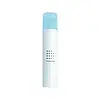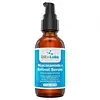What's inside
What's inside
 Key Ingredients
Key Ingredients

 Benefits
Benefits

 Concerns
Concerns

 Ingredients Side-by-side
Ingredients Side-by-side

Water
Skin ConditioningAdapalene 0.1%
Niacinamide 4%
SmoothingClindamycin Phosphate 1%
Propylene Glycol
HumectantGlycerin
HumectantPanthenol
Skin ConditioningCetyl Alcohol
EmollientGlyceryl Stearate
EmollientIsohexadecane
EmollientIsododecane
EmollientC13-15 Alkane
SolventDimethicone
EmollientPropanediol
SolventPolyacrylate-13
Polyisobutene
Polysorbate 20
EmulsifyingPolyurethane-39
Phenoxyethanol 0.6%
PreservativeTocopheryl Acetate
AntioxidantCeramide AP
Skin ConditioningCeramide EOP
Skin ConditioningCeramide NP
Skin ConditioningPhytosphingosine
Skin ConditioningCholesterol
EmollientSodium Lauroyl Lactylate
EmulsifyingXanthan Gum
EmulsifyingCarbomer
Emulsion StabilisingSodium Hyaluronate
HumectantWater, Adapalene 0.1%, Niacinamide 4%, Clindamycin Phosphate 1%, Propylene Glycol, Glycerin, Panthenol, Cetyl Alcohol, Glyceryl Stearate, Isohexadecane, Isododecane, C13-15 Alkane, Dimethicone, Propanediol, Polyacrylate-13, Polyisobutene, Polysorbate 20, Polyurethane-39, Phenoxyethanol 0.6%, Tocopheryl Acetate, Ceramide AP, Ceramide EOP, Ceramide NP, Phytosphingosine, Cholesterol, Sodium Lauroyl Lactylate, Xanthan Gum, Carbomer, Sodium Hyaluronate
Water
Skin ConditioningHyaluronic Acid
HumectantHamamelis Virginiana Water
AstringentGlycerin
HumectantAloe Barbadensis Leaf Juice
Skin ConditioningNiacinamide
SmoothingTriticum Vulgare Germ Oil
EmollientSimmondsia Chinensis Seed Oil
EmollientRetinol
Skin ConditioningTocopherol
AntioxidantCamellia Sinensis Leaf Extract
AntimicrobialPropolis Extract
Skin ConditioningCentella Asiatica Extract
CleansingEquisetum Arvense Extract
AstringentGeranium Maculatum Extract
TonicTaraxacum Officinale Extract
Skin ConditioningPentylene Glycol
Skin ConditioningHydroxyethyl Ethylcellulose
EmulsifyingCarrageenan
Polysorbate 20
EmulsifyingPotassium Sorbate
PreservativeSodium Benzoate
MaskingAlcohol
AntimicrobialLecithin
EmollientEthylhexylglycerin
Skin ConditioningWater, Hyaluronic Acid, Hamamelis Virginiana Water, Glycerin, Aloe Barbadensis Leaf Juice, Niacinamide, Triticum Vulgare Germ Oil, Simmondsia Chinensis Seed Oil, Retinol, Tocopherol, Camellia Sinensis Leaf Extract, Propolis Extract, Centella Asiatica Extract, Equisetum Arvense Extract, Geranium Maculatum Extract, Taraxacum Officinale Extract, Pentylene Glycol, Hydroxyethyl Ethylcellulose, Carrageenan, Polysorbate 20, Potassium Sorbate, Sodium Benzoate, Alcohol, Lecithin, Ethylhexylglycerin
Alternatives
Ingredients Explained
These ingredients are found in both products.
Ingredients higher up in an ingredient list are typically present in a larger amount.
Glycerin is already naturally found in your skin. It helps moisturize and protect your skin.
A study from 2016 found glycerin to be more effective as a humectant than AHAs and hyaluronic acid.
As a humectant, it helps the skin stay hydrated by pulling moisture to your skin. The low molecular weight of glycerin allows it to pull moisture into the deeper layers of your skin.
Hydrated skin improves your skin barrier; Your skin barrier helps protect against irritants and bacteria.
Glycerin has also been found to have antimicrobial and antiviral properties. Due to these properties, glycerin is often used in wound and burn treatments.
In cosmetics, glycerin is usually derived from plants such as soybean or palm. However, it can also be sourced from animals, such as tallow or animal fat.
This ingredient is organic, colorless, odorless, and non-toxic.
Glycerin is the name for this ingredient in American English. British English uses Glycerol/Glycerine.
Learn more about GlycerinNiacinamide is a multitasking form of vitamin B3 that strengthens the skin barrier, reduces pores and dark spots, regulates oil, and improves signs of aging.
And the best part? It's gentle and well-tolerated by most skin types, including sensitive and reactive skin.
You might have heard of "niacin flush", or the reddening of skin that causes itchiness. Niacinamide has not been found to cause this.
In very rare cases, some individuals may not be able to tolerate niacinamide at all or experience an allergic reaction to it.
If you are experiencing flaking, irritation, and dryness with this ingredient, be sure to double check all your products as this ingredient can be found in all categories of skincare.
When incorporating niacinamide into your routine, look out for concentration amounts. Typically, 5% niacinamide provides benefits such as fading dark spots. However, if you have sensitive skin, it is better to begin with a smaller concentration.
When you apply niacinamide to your skin, your body converts it into nicotinamide adenine dinucleotide (NAD). NAD is an essential coenzyme that is already found in your cells as "fuel" and powers countless biological processes.
In your skin, NAD helps repair cell damage, produce new healthy cells, support collagen production, strengthen the skin barrier, and fight environmental stressors (like UV and pollution).
Our natural NAD levels start to decline with age, leading to slower skin repair, visible aging, and a weaker skin barrier. By providing your skin niacinamide, you're recharging your skin's NAD levels. This leads to stronger, healthier, and younger looking skin.
Another name for vitamin B3 is nicotinamide. This vitamin is water-soluble and our bodies don't store it. We obtain Vitamin B3 from either food or skincare. Meat, fish, wheat, yeast, and leafy greens contain vitamin B3.
The type of niacinamide used in skincare is synthetically created.
Learn more about NiacinamidePolysorbate 20 is made by combining ethoxylation of sorbitan, ethylene oxide, and lauric acid. It is a mild cleansing agent, surfactant, and emulsifier.
As a surfactant, it helps collect dirt and oils for washing. Emulsifiers prevent oils and water from separating.
Polysorbate 20 also adds scent to a product. Since it is made using sorbitol, it has a sweet scent. Sorbitol can also be found in fruits such as apples and peaches.
The lauric acid used to create Polysorbate 20 is often derived from coconuts.
Polysorbate 20 may not be fungal acne safe.
Learn more about Polysorbate 20Water. It's the most common cosmetic ingredient of all. You'll usually see it at the top of ingredient lists, meaning that it makes up the largest part of the product.
So why is it so popular? Water most often acts as a solvent - this means that it helps dissolve other ingredients into the formulation.
You'll also recognize water as that liquid we all need to stay alive. If you see this, drink a glass of water. Stay hydrated!
Learn more about Water